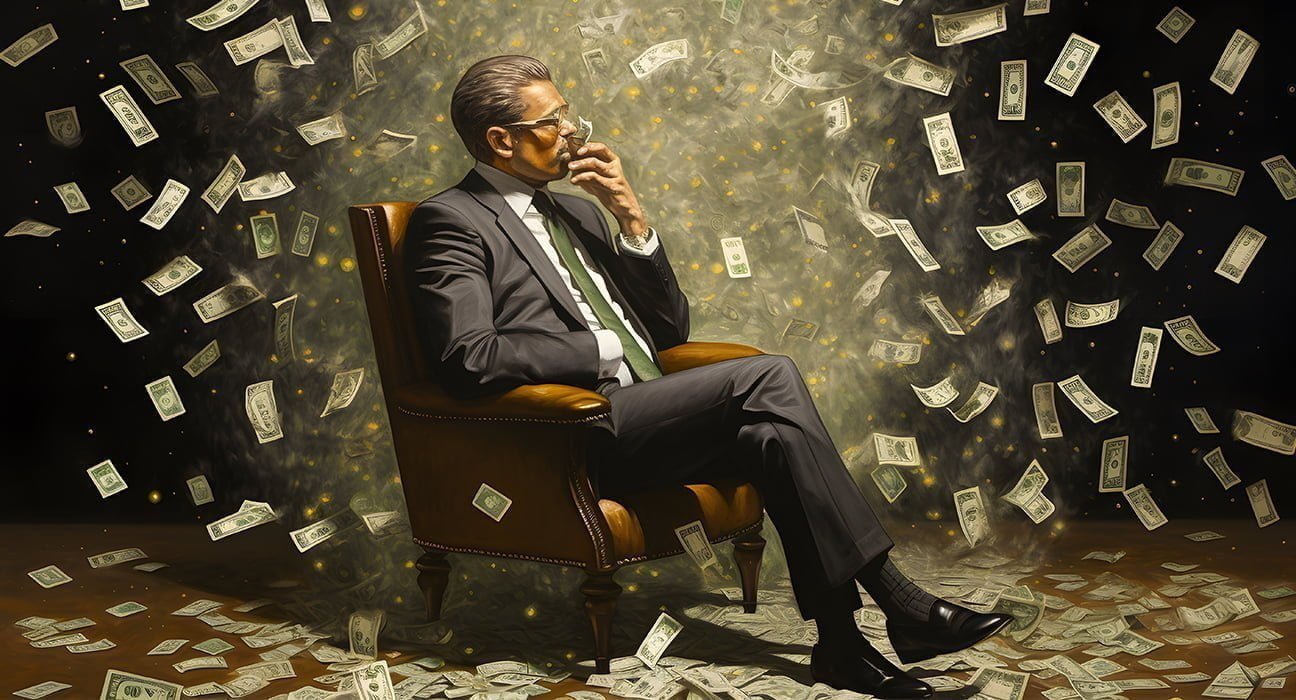Unpacking Walt Disney's Fortune: Just How Rich Was He?
Have you ever stopped to ponder just how rich is Walt Disney, the creative force behind so many beloved stories and characters? It's a question that often pops up when we think about figures who shaped popular culture in such a big way. You see, his name is practically synonymous with imagination and joy for countless people across generations, which, in a way, makes you wonder about the person behind it all.
For many, the image of Walt Disney is less about money and more about magic. We picture him sketching Mickey Mouse, overseeing the construction of Disneyland, or narrating his wonderful TV shows. Yet, the vastness of the entertainment empire he built naturally leads folks to ask about his personal financial standing. It’s a pretty common curiosity, really.
So, we're going to take a closer look at his financial journey, from his early struggles to the building of a worldwide phenomenon. We will explore what "rich" truly meant for someone like Walt, and consider his wealth beyond just the numbers, which, you know, is sometimes a bit more complex than it first seems.
Table of Contents
- Walt Disney: A Quick Look at His Life
- Early Life and Humble Beginnings
- The Spark of Genius: Animation's Dawn
- Building an Empire: From Mickey to Disneyland
- Walt Disney's Personal Wealth: A Closer Look
- The Legacy of Wealth: Beyond the Man
- Frequently Asked Questions About Walt Disney's Wealth
Walt Disney: A Quick Look at His Life
Before we get into the details of his fortune, it's a good idea to remember a little about the man himself. Walt Disney was a visionary, a storyteller, and a pretty shrewd businessman. His life was, in many ways, a classic American success story, starting from very modest means. Here are some quick facts about him, just to set the scene.
| Detail | Information |
|---|---|
| Full Name | Walter Elias Disney |
| Born | December 5, 1901, Chicago, Illinois, U.S. |
| Died | December 15, 1966 (aged 65), Burbank, California, U.S. |
| Occupation | Animator, film producer, director, screenwriter, voice actor, entrepreneur, entertainer, international icon |
| Spouse | Lillian Bounds (m. 1925) |
| Children | 2 (Diane Marie Disney, Sharon Mae Disney) |
| Known For | Co-founding The Walt Disney Company, creating Mickey Mouse, Disneyland, Walt Disney World, animated feature films |
| Awards | 26 Academy Awards (including 4 honorary), 7 Emmy Awards, Presidential Medal of Freedom |
Early Life and Humble Beginnings
Walt Disney’s early life was, by all accounts, not one of luxury. He grew up in a family that often struggled, and he started working at a very young age. This included delivering newspapers and working on trains, which, you know, was a lot of hard physical labor for a young boy. These experiences, in a way, shaped his outlook and probably gave him a strong work ethic.
His family moved quite a bit, from Chicago to Marceline, Missouri, then to Kansas City. Each place offered different lessons and challenges. Marceline, with its small-town charm, apparently inspired many of his later ideas about idyllic settings. It was a time when he began to show a real interest in drawing, a skill that would, of course, change his whole life.
The idea of having "goods, property, and money in abundance" was probably very far from his reality back then. He was more focused on making ends meet and pursuing his passion for art. This early period really highlights the contrast with his later success, showing just how far he came, which is pretty inspiring, if you ask me.
The Spark of Genius: Animation's Dawn
Walt's early ventures into animation were, frankly, quite difficult. He started a company in Kansas City that eventually went bankrupt. This was a tough blow, but it didn't stop him. He moved to Hollywood with almost nothing, just a dream and a little bit of money, which, as a matter of fact, wasn't much at all.
With his brother Roy, he founded the Disney Brothers Studio in 1923. They faced many setbacks, including losing the rights to their first successful character, Oswald the Lucky Rabbit. This loss was a huge lesson, leading Walt to create a new character that he would fully own. And that, of course, was Mickey Mouse, who changed everything.
Mickey Mouse, introduced in "Steamboat Willie" in 1928, was an instant hit. This success provided the first real financial stability for the studio. It was the beginning of what would become a vast collection of valuable possessions and resources, moving Walt and his company slowly but surely away from mere survival to something much bigger, you know?
Building an Empire: From Mickey to Disneyland
The journey from a small animation studio to a global entertainment giant was long and, at times, very risky. Walt Disney was always pushing boundaries, investing heavily in new technologies and grand ideas. This constant innovation was a key part of how his wealth, and the company's wealth, grew over the years.
The Studio's Growth and Financial Hurdles
The 1930s saw the Disney studio produce groundbreaking animated shorts, but Walt wanted more. He decided to make the first full-length animated feature film, "Snow White and the Seven Dwarfs." This was an enormous financial gamble, costing a staggering sum for the time. Many in Hollywood called it "Disney's Folly," thinking it would surely fail. They were, in some respects, quite wrong.
When "Snow White" premiered in 1937, it was a massive success, earning over $8 million on its initial release. This success provided a huge financial boost and allowed the studio to expand significantly. It also showed that audiences were ready for more complex animated stories, which, you know, was a truly important discovery.
However, the company faced tough times during World War II, producing propaganda films and struggling with international markets. The post-war years also brought financial strains as they tried to recover and innovate. It was a period of ups and downs, showing that even a growing company could face serious money worries, which, as a matter of fact, is pretty common in business.
Diversification and New Ventures
Walt Disney was never content to just stick with animation. He saw the potential for his characters and stories in many other forms. This led to live-action films, television shows, and merchandise, which, frankly, expanded the company's income streams quite a bit. The "Disneyland" television show, for instance, was a brilliant move, promoting the park and the company's content at the same time.
These new ventures were crucial for building the company's financial strength. They meant that the Disney name was not just associated with cartoons but with a whole range of family entertainment. This diversification helped to secure the company's future and, by extension, Walt's own financial standing, which, you know, was pretty smart.
The company started to accumulate more and more valuable resources, beyond just the animation cells. They had intellectual property, film libraries, and a growing brand recognition. This meant they were becoming "abundantly supplied with resources, means, or funds," as my text puts it, and it was all thanks to Walt's forward thinking, more or less.
Disneyland: A Monumental Investment
Perhaps Walt's biggest financial gamble was Disneyland. Building a theme park was an unprecedented undertaking for an animation studio. It required immense capital, and traditional banks were hesitant to lend money for such a novel idea. So, he had to get creative with financing, which, you know, involved partnerships and leveraging the TV show.
Disneyland opened in 1955 and was an immediate sensation. It quickly became a huge source of revenue for the company, proving Walt's vision once again. This park was not just a place for entertainment; it was a massive physical asset, a piece of property that generated significant income. It was, quite literally, a goldmine, you could say.
The success of Disneyland solidified the company's position as a major player in the entertainment world. It also showed that Walt was willing to put his own reputation, and a lot of money, on the line for his dreams. This willingness to take big, calculated risks was, in a way, a hallmark of his approach to business and wealth creation, which is pretty fascinating.
Walt Disney's Personal Wealth: A Closer Look
When people ask how rich is Walt Disney, they're usually curious about his personal fortune at the time of his passing. It's a bit different from the wealth of the company he built, which continued to grow exponentially long after he was gone. We need to consider what "rich" meant for him, personally, in that era.
What Does "Rich" Mean for Walt?
My text describes "rich" as "having goods, property, and money in abundance." It also notes that "a rich person has a lot of money or valuable possessions." For Walt Disney, this definition applies, but with some unique considerations. He wasn't someone who hoarded cash or lived an incredibly flashy lifestyle, as a matter of fact.
His wealth was largely tied up in the company he founded, The Walt Disney Company. He owned a significant percentage of the company's stock, which represented his most valuable possession. This stock, over time, became incredibly valuable, giving him "more than enough to gratify normal needs or desires," as the definition goes.
So, while he certainly had "an abundant supply of money, property, or possessions of value," much of it was in the form of company shares. This meant his personal wealth fluctuated with the company's performance, but it was, pretty consistently, a very substantial sum. He was, by any measure, a very wealthy individual, you know, because of his ownership in such a thriving business.
Estimating His Fortune at Death
Estimating Walt Disney's exact net worth at the time of his death in 1966 is a bit tricky, and figures often vary. This is because much of his wealth was in illiquid assets, like his shares in the company, rather than just cash in a bank account. Also, the value of those shares would be assessed at the time of his passing, which, you know, was a specific moment in the market.
Most estimates suggest that Walt Disney's personal fortune at the time of his death was somewhere in the range of $100 million to $150 million. To put that into perspective, $100 million in 1966 would be equivalent to several hundred million dollars today, accounting for inflation. So, he was, in fact, quite rich by any standard, even back then.
It's important to remember that this figure represents his personal holdings, not the overall value of The Walt Disney Company, which was, and still is, a much larger entity. His wealth was a direct reflection of the success and growth of the business he built from the ground up, which, you know, is a pretty amazing accomplishment.
Beyond Just Money: The Value of His Vision
While the monetary figures are impressive, Walt Disney's true richness extended far beyond his bank account or stock portfolio. He possessed a wealth of creativity, determination, and foresight that few could match. This kind of "richness" isn't measured in dollars, but in the impact he had on the world, which is, in a way, priceless.
He had an abundant supply of ideas and the drive to bring them to life, even when others doubted him. This creative abundance, or "plentiful" quality, as my text suggests for "rich," truly defines him. He invested his time, energy, and passion into his work, and that, arguably, yielded the greatest returns of all.
His vision for entertainment, for storytelling, and for creating places where families could share joy, became a cultural treasure. This legacy, in some respects, is a form of wealth that continues to generate happiness and inspiration for people around the globe. It's a different kind of fortune, but a very real one, you know?
The Legacy of Wealth: Beyond the Man
Walt Disney's passing in 1966 did not stop the growth of the company he founded. In fact, The Walt Disney Company continued to expand, becoming one of the largest and most influential media conglomerates in the world. The value of his original investment and his vision continued to appreciate enormously, long after he was gone, which is pretty incredible.
The company's current market capitalization, which is the total value of its outstanding shares, runs into the hundreds of billions of dollars. This staggering sum is a direct testament to the foundation Walt laid. His financial success wasn't just about his personal fortune; it was about creating a self-sustaining entity that would thrive for decades, and that, you know, is quite a legacy.
So, while Walt Disney himself was a very rich man at the time of his death, the wealth generated by his ideas and his company has continued to grow exponentially. It's a fascinating example of how one person's creative genius and business acumen can create enduring value, both financially and culturally, for the entire world to enjoy, even today.
Frequently Asked Questions About Walt Disney's Wealth
Was Walt Disney a billionaire?
No, Walt Disney was not a billionaire at the time of his death in 1966. His personal fortune was estimated to be in the range of $100 million to $150 million. While this was an incredibly substantial sum for that era, and certainly made him a very rich man, it did not reach the billion-dollar mark. The concept of a "billionaire" was much less common then, too it's almost, than it is today.
The company he founded, The Walt Disney Company, did eventually become a multi-billion-dollar entity, and then a multi-hundred-billion-dollar one. But that growth happened over many decades after his passing. So, while his vision created immense wealth, his personal holdings at the time he left us were in the hundreds of millions, which, you know, is still pretty amazing.
How much money did Walt Disney have when he died?
When Walt Disney passed away in December 1966, his personal wealth was generally estimated to be between $100 million and $150 million. This figure largely consisted of his ownership stake in The Walt Disney Company, which included shares and other assets tied to the business. It wasn't just cash, you see, but rather the value of his ownership in a thriving enterprise.
To put that into today's terms, adjusting for inflation, that amount would be worth several hundred million dollars in current money. For instance, according to the U.S. Bureau of Labor Statistics' Consumer Price Index, $100 million in 1966 would have the same buying power as roughly $940 million in 2023. So, he was, in fact, quite affluent, by any measure, which is pretty clear.
How did Walt Disney make his fortune?
Walt Disney made his fortune primarily through his ownership and leadership of The Walt Disney Company. His wealth grew as the company expanded from animated shorts to feature films, television production, merchandise, and, significantly, theme parks like Disneyland. Each successful venture added to the company's value, and since he was a major shareholder, his personal wealth increased alongside it, which, you know, is how company founders often get rich.
He was a pioneer in entertainment, constantly innovating and taking calculated risks. The success of creations like Mickey Mouse, "Snow White," and Disneyland generated immense revenue and built a valuable brand. His ability to diversify and adapt his business model was key to accumulating such significant wealth, making him a truly rich man in terms of valuable possessions and resources, as my text describes, basically.
Learn more about Walt Disney's impact on our site, and check out this page for a timeline of Disney's history.
For more details on historical inflation, you might find information from the U.S. Bureau of Labor Statistics useful.

The Psychology of Rich People

Wealthy Meaning

The Super-Rich Can’t Hide From the Rest of Us | Occupy.com